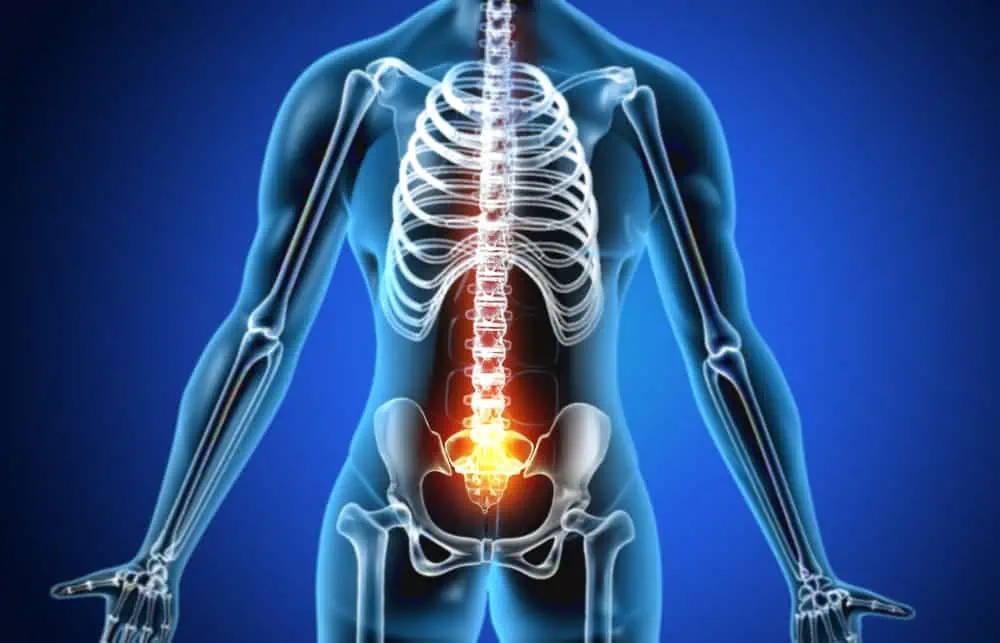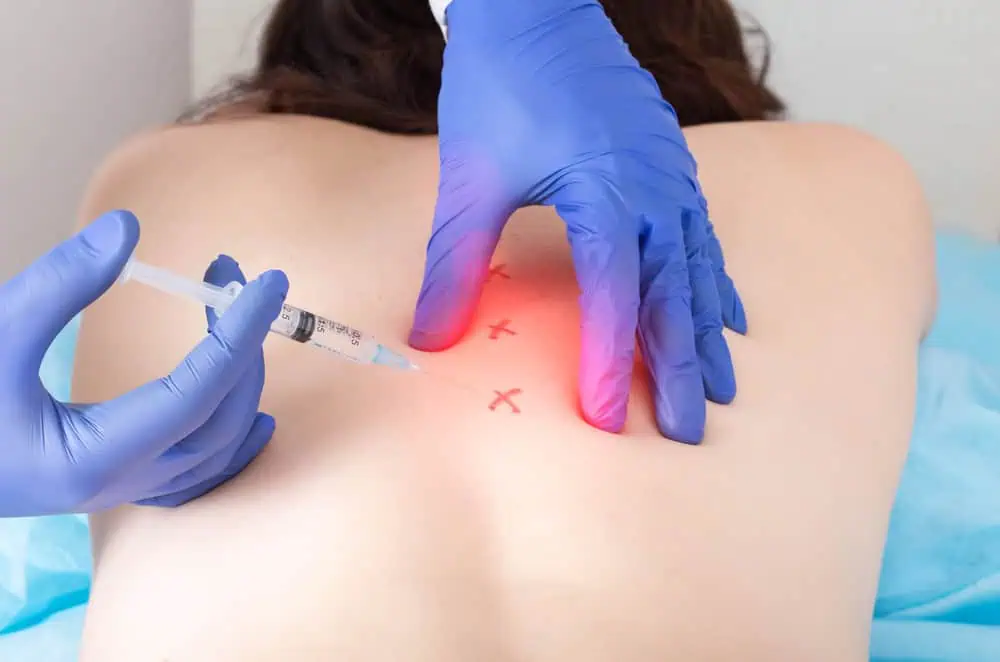Joint injections are medical treatments for alleviating pain and improving function in joints afflicted by arthritis or other conditions. By directly delivering medication to the site of discomfort, these injections can provide targeted relief. Common substances used in joint injections include corticosteroids, hyaluronic acid, and, more recently, platelet-rich plasma and stem cells. Each type carries distinct benefits and considerations, addressing not only pain but also inflammation and joint lubrication.
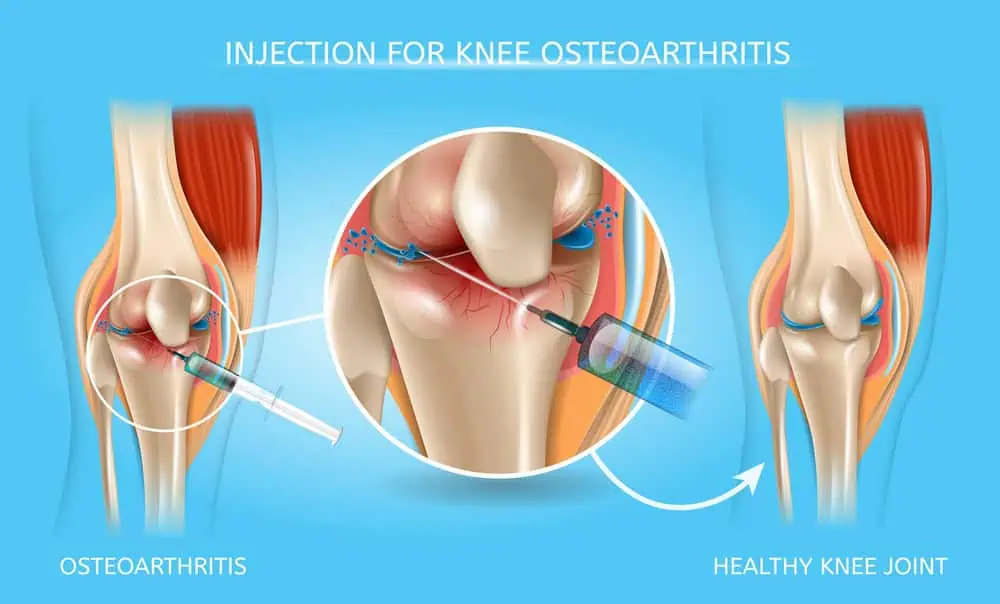
We understand the necessity of managing joint pain effectively, and joint injections offer a non-surgical option for many individuals. While the concept may seem straightforward, the actual practice involves careful consideration of the type of injection, the specific conditions it is used to treat, and the individual circumstances of the patient. Proper administration techniques and post-injection care are crucial to maximizing the benefits of joint injections while minimizing potential risks.
Key Takeaways
- Joint injections provide targeted relief for joint pain through various types of substances.
- These treatments cater to non-surgical pain management and require careful consideration of application.
- Effectiveness and safety of joint injections depend on proper administration and follow-up care.
Fundamentals of Joint Injections
In joint injections, we address various joint-related issues by delivering medications directly into the joint space. Effective management of joint pain and inflammation hinges on understanding the types of injections available and their mechanisms of action.
Types of Joint Injections
There are several types of injections used to treat joint pain and inflammation. These include:
- Corticosteroid Injections: We often use these to reduce inflammation in joints affected by arthritis or other inflammatory conditions.
- Hyaluronic Acid (HA) Injections: Also known as viscosupplementation, hyaluronic acid injections are used to lubricate and cushion the joint, which may be particularly helpful in knee osteoarthritis.
- Platelet-Rich Plasma (PRP) Injections: We utilize PRP injections to promote healing using the patient’s own blood platelets, which can potentially aid in repairing damaged joint tissue.
Each of these injections plays a distinct role in managing joint pain and inflammation and may be recommended based on the specific needs of the patient.
Mechanism of Action
The primary mechanisms by which these injections work to alleviate joint issues are:
- Reducing Inflammation: Corticosteroids are potent anti-inflammatory medications. By injecting them directly into the joint, we aim to reduce inflammation and swelling rapidly.
- Improving Joint Function: Hyaluronic acid works by restoring the normal viscoelastic properties of the joint fluid. This improves joint movement and can decrease pain.
- Facilitating Tissue Repair: PRP injections deliver a high concentration of growth factors that may enhance the body’s natural healing processes.
Joint Injection Procedures
Joint injections are a targeted solution we offer for the management of joint pain, often due to arthritis. These procedures are minimally invasive and can provide rapid relief.
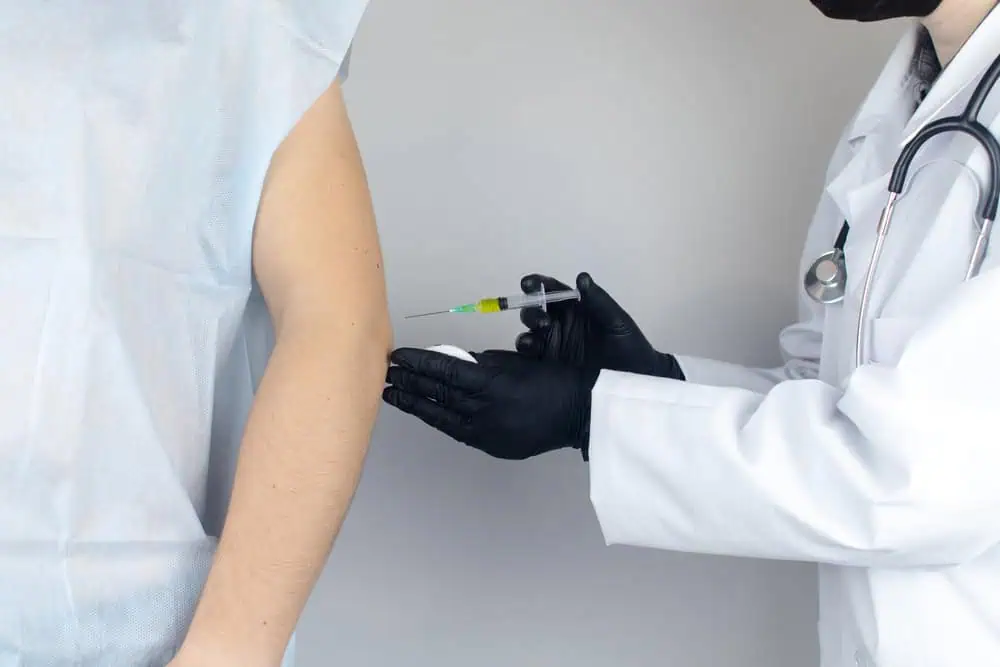
Indications and Diagnosis
The first step in the journey toward pain relief through joint injections is to accurately diagnose the cause of joint pain. We commonly recommend injections when patients present with symptoms of inflammation or arthritis that have not responded adequately to traditional treatment methods such as anti-inflammatory medications, ice, or physical therapy. Ultrasound or other imaging techniques might be used to ensure precise application of the injection, tailoring the method to the specific needs of each joint.
Preparation and Techniques
Before administering a joint injection, we prepare the area to minimize discomfort and ensure the precision of the procedure. The skin over the joint is cleaned to prevent infection. A local anesthetic may be used to numb the area. We then employ various techniques to deliver the injection, which may include the use of ultrasound guidance to place the numbing agent and anti-inflammatory medications directly into the joint space. The procedure is often quick, typically taking less than half an hour.
Post-Injection Care
After receiving a joint injection, it’s crucial for patients to know what to expect and how to care for themselves to maximize the benefits of the procedure. We advise patients to rest the affected joint and apply ice as needed to control any swelling. As the local anesthetic wears off, there might be some temporary discomfort. Exercise and activity levels should be gradually reintroduced according to our guidance, and follow-up appointments are important to assess the outcome and to plan if further physical therapy or additional injections are needed.
Applications and Efficacy
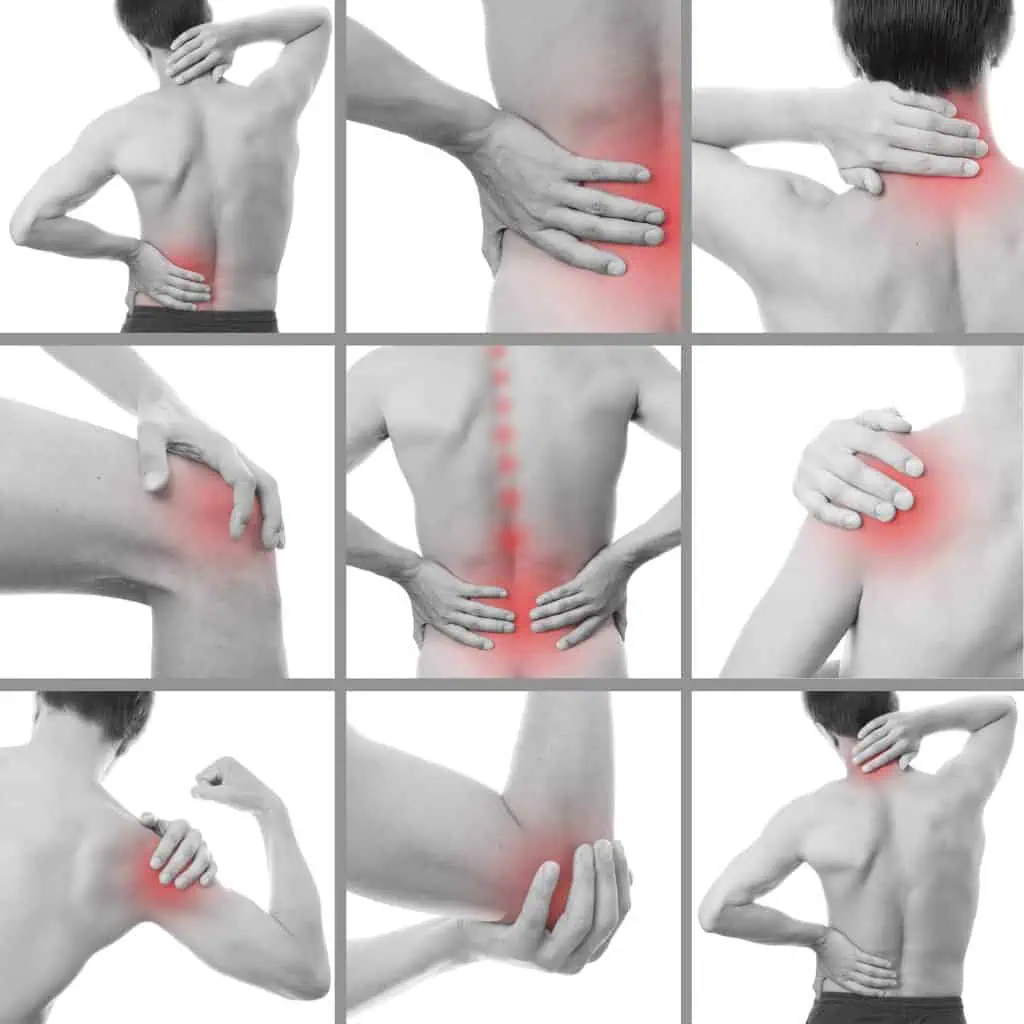
Joint injections have become a cornerstone in the management of arthritis and related joint conditions. We see evidence of their efficacy in providing pain relief, reducing inflammation, and promoting the health of cartilage and joint tissues.
Arthritis Management
In the realm of arthritis management, intra-articular injections are a widely adopted treatment modality. Specifically for osteoarthritis of the knee, hip, or shoulder joints, injections containing corticosteroids or hyaluronic acid have been reported to provide significant symptom relief. According to a review published on NCBI, these injections can alleviate joint pain and improve functionality for patients where conservative treatments have not been sufficient.
For inflammatory arthritis types, such as rheumatoid arthritis and psoriatic arthritis, joint injections can be used to deliver medications directly to the affected site. This localized approach helps to minimize systemic side effects while maximizing the therapeutic effects within the joint.
Pain and Inflammation Relief
Moving on to pain and inflammation relief, joint injections commonly incorporate corticosteroids, which are powerful anti-inflammatory agents. These are particularly beneficial for acute flare-ups of arthritis, providing rapid relief of knee pain, back pain, and inflammation in other affected joints such as the elbow, wrist, ankle, hands, and feet.
Hyaluronic acid injections, referenced in an article on NCBI, also play a role in managing osteoarthritis by lubricating the joint and absorbing shock, thereby easing pain and reducing inflammation.
Cartilage and Tissue Health
The integrity of cartilage and joint tissues is paramount in maintaining joint function and preventing the progression of arthritis. Some emerging regenerative therapies, highlighted in research presented in the LWW Journal, aim to restore tissue health using substances like platelet-rich plasma (PRP). While the evidence is still evolving, there is potential for these injections to support the healing of damaged tissues within the joint.
We constantly seek treatments that not only provide relief but also contribute to the long-term health of joints. Understanding the specific applications and proper use of these injections is critical to optimizing outcomes for patients with various forms of arthritis.
Benefits and Risks
In this section, we will closely examine the benefits and risks associated with joint injections. We understand that for individuals considering this treatment option, it’s vital to have a clear view of both the potential relief it can offer and the possible adverse effects that may occur.
Advantages of Joint Injections
Joint injections, particularly corticosteroid injections or cortisone shots, can provide significant relief from pain and inflammation. When we look at the benefits:
- Rapid pain relief: These injections can reduce pain swiftly, often within a few days.
- Decreased inflammation: Corticosteroids are powerful anti-inflammatory medications that can reduce swelling and other signs of inflammation in the joint.
- Improved mobility: With reduced pain and swelling, patients often experience an improvement in range of motion and overall joint function.
- Treatment option: Joint injections can be an effective part of a comprehensive arthritis management plan.
Potential Side Effects and Complications
While joint injections can be beneficial, they come with a range of side effects and potential complications that we must consider:
- Pain at the injection site: It’s not uncommon to experience temporary pain where the injection was administered.
- Swelling or bleeding: A temporary increase in swelling or minor bleeding may occur post-injection.
- Allergic reaction: Though rare, some individuals may have an allergic response to the medication used.
- Infection: There’s a low risk, but injections can potentially lead to a joint infection.
- Elevated blood sugar: Particularly important for individuals with diabetes, cortisone shots can cause a short-term rise in blood sugar levels.
By striking a balance between the relief offered by joint injections and an understanding of their risks, we can make informed decisions regarding their use as a treatment option.
Practical Considerations
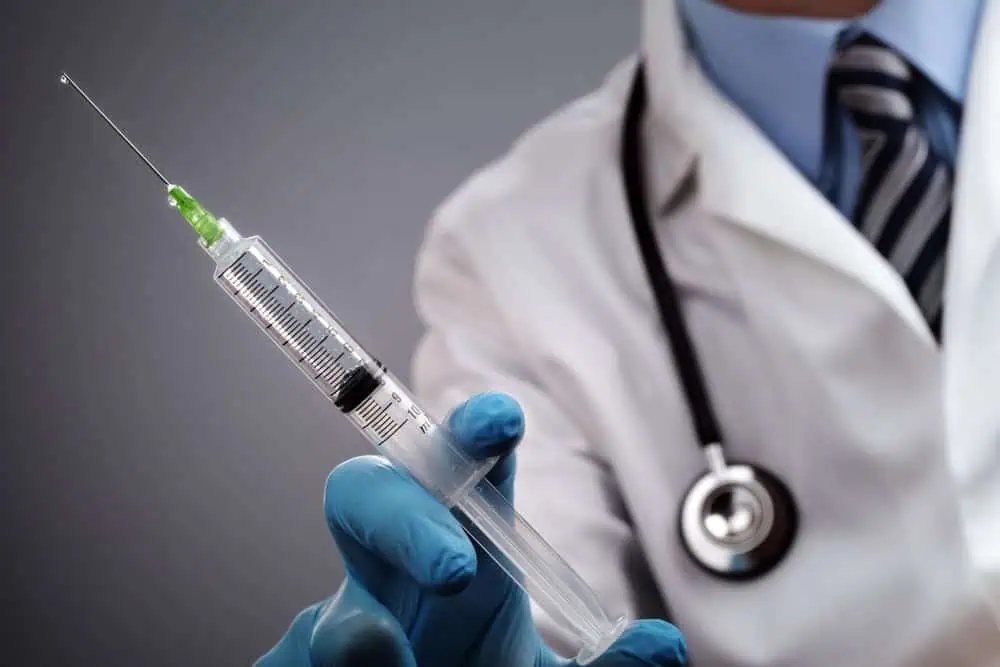
In the realm of joint injections, practical considerations play a crucial role in ensuring effective outcomes. We must take into account the timing of treatment, the selection of an appropriate medical provider, as well as the understanding of insurance coverage and associated costs.
When to Seek Treatment
We should seek treatment when a diagnosis indicates that joint pain is not responding to conservative management, such as rest or physical therapy. This typically occurs in conditions like inflammatory arthritis or during instances of acute injury. In alignment with recommendations from the American College of Rheumatology (ACR), we recognize that early intervention can be key to preventing further joint damage.
Choosing a Medical Provider
When selecting a medical provider, it’s important to consider their specialization. For enhanced care, we may opt for a provider with expertise in sports medicine or an orthopaedic surgeon with experience in musculoskeletal diagnoses. A reputable medical institution, such as Mayo Clinic, can also provide a multidisciplinary approach to treatment.
| Provider Type | Specialization |
|---|---|
| Orthopaedic Surgeon | Musculoskeletal system |
| Sports Medicine Doctor | Sports-related injuries and conditions |
| Rheumatologist | Inflammatory joint diseases |
Insurance and Costs
Our medical insurance often dictates our choices in healthcare. Prior to proceeding with a joint injection, it’s essential that we consult with our insurance provider to understand the coverage details. Costs can vary significantly depending on whether the procedure is performed in a doctor’s office or a specialized facility. We should inquire about the coverage for the type of injection prescribed, as certain treatments may not be fully covered.
- Insurance Coverage Considerations:
- Co-payments
- Deductibles
- In-network vs Out-of-network services
- Pre-authorization requirements
In summary, we must approach joint injections with practical considerations to ensure that we receive the most effective and affordable care tailored to our individual needs.
Alternative and Complementary Therapies

In our search for joint pain relief, we often explore alternative and complementary therapies that can support or replace traditional treatments. Such therapies might include physical modalities and injection alternatives that aim to reduce inflammation, alleviate pressure, manage pain, and promote regeneration.
Physical Modalities
We recognize that physical modalities play a crucial role in managing symptoms like stiffness, tendinitis, gout, and bursitis. The application of heat can improve circulation and reduce discomfort, while cold therapy helps to decrease swelling and inflammation. We often recommend occupational therapy to adapt daily activities to reduce strain on affected joints. Additionally, incorporating acupuncture may also provide pain relief through minimally invasive techniques that have been found to stimulate the release of anti-inflammatory molecules and white blood cells.
- Heat Therapy: Apply heat to relax muscles and improve blood flow.
- Cold Therapy: Use cold packs to reduce inflammation and numb the area.
- Occupational Therapy: Engage in tailored activities to maintain joint function.
- Acupuncture: Utilize this ancient practice to stimulate the body’s pain-relieving mechanisms.
Injection Alternatives
When considering injection alternatives, we approach with a focus on safety and efficacy. Treatments like prolotherapy, stem cell injections, and platelet-rich plasma (PRP) have been lauded for their regenerative potential. Prolotherapy involves injecting a solution to stimulate healing, while stem cell injections aim to utilize the body’s own regenerative capacity. PRP, which involves the injection of a concentration of a patient’s own platelets, is believed to accelerate the healing of injured tendons, ligaments, muscles, and joints. Hyaluronic acid injections mimic the natural joint fluid, providing lubrication and potentially reducing pain.
- Prolotherapy: Inject an irritant solution to stimulate healing.
- Stem Cell Injections: Use the body’s own cells to promote tissue regeneration.
- Platelet-Rich Plasma: Inject concentrated platelets to enhance healing.
- Hyaluronic Acid Injections: Supplement joint fluid to improve mobility and comfort.
Each of these therapies brings potential benefits, but it is important to weigh them against possible cons, such as the risk of infection, the need for repeated treatments, and the possibility of serious side effects. We always encourage a full discussion of the risks and advantages before embarking on a particular treatment pathway.
Advancements and Research

In the field of joint injections, we observe significant progress with new treatment options and substantial research to back their effectiveness. Here, we discuss recent emerging therapies and dive into the latest clinical studies.
Emerging Treatment Options
Recent innovations in joint injection therapies include platelet-rich plasma (PRP) and stem cell injections, both leaning heavily towards the goal of regeneration. PRP injections are concentrated with platelets from our own blood, purported to aid in the healing of injured tendons, muscles, and joints; this leverages the body’s own growth factors to facilitate healing and reduce inflammation. On the other end, stem cell injections are being evaluated for their potential in not just alleviating pain but also promoting the regeneration of cartilage, a promising treatment option for conditions like osteoarthritis.
Clinical Studies and Reviews
Our engagement with the current literature includes analyzing clinical trials and systematic reviews to validate the efficacy of new injection treatments. Studies suggest that oxygen-ozone therapy in the knee may offer better pain relief and improved joint function compared to placebo or corticosteroids. Furthermore, research has identified that injections containing extracellular vesicles (EVs) and mesenchymal stem cell (MSC) secretome show promise in animal models for reducing pain and improving joint movement, setting a foundation for potential human applications.
Patient Education and Resources

We understand that receiving a joint injection can be a significant step in managing pain and improving joint function. Here, we provide essential information regarding preoperative guidelines, postoperative recovery, and sources of support and rehabilitation to aid your journey towards healing.
Preoperative Guidelines
Before undergoing a joint injection, it’s crucial to be informed about the procedure. We ensure that our patients understand the potential benefits and risks associated with the treatment. Following FDA guidelines, we discuss the type of substances to be injected, such as corticosteroids or hyaluronic acid, and how they work to alleviate pain and reduce inflammation. A patient must be aware of any required adjustments in their diet or exercise routine prior to the procedure, as well as any medications that should be avoided to prevent excessive bleeding or pressure on the joint.
Postoperative Recovery Tips
After the injection, we emphasize the importance of the healing process. Patients should expect to feel some soreness, and we offer specific instructions to minimize discomfort, such as applying ice to the injury site or taking prescribed pain relievers. Recommendations for gradually resuming activities are provided to ensure that undue pressure isn’t placed on the treated joint too quickly. Following a balanced diet rich in anti-inflammatory foods can also support recovery.
Support and Rehabilitation Information
Rehab plays a vital role in the success of joint injections. We share detailed exercise plans tailored to each individual’s condition and recovery pace. Our patients are encouraged to engage in physical therapy or structured rehabilitation programs to regain strength and mobility. We provide resources and information on local support groups where you can connect with others who have undergone similar procedures. The combination of professional guidance and peer support can greatly enhance the long-term benefits of joint injections.
Outlook and Future of Joint Injections
As we examine the trajectory of joint injections, we anticipate a landscape of innovation and expansion. The industry’s growth is fueled by clinical research, with a significant shift towards regeneration therapies and minimally invasive procedures.
Regenerative Medicine:
- We’re closely monitoring developments in regenerative medicine that focus on healing and possibly regrowing damaged tissues. Stem cell injections and platelet-rich plasma (PRP) are at the forefront, offering exciting new avenues for treatment.
Clinical Trials and Research:
- Our dedication to enhancing joint injection therapies involves ongoing participation in clinical trials. These trials are integral for validating the efficacy of new treatments and ensuring patient safety.
- Research is particularly concentrated on finding the optimal formulations and combinations to provide both relief and recovery, rather than mere symptom management.
Minimally Invasive Approach:
- We champion the adoption of minimally invasive treatment options that promise reduced recovery times and lower risks compared to traditional surgical options.
- It’s our responsibility to ensure these advancements are accessible and provide clear, measurable benefits to patients.
The Future of Treatment Options:
- We’re expanding our toolkit with a range of hyaluronic acid injections, growth factors, and more, aiming to address various stages and types of joint conditions.
- The market reflects our confidence. With a projected compound annual growth rate (CAGR) of 8.6% from 2023 to 2030, the outlook for joint pain injections is promising.
In conclusion, we’re committed to pushing the boundaries of what’s possible in joint injection therapies. Armed with solid research, innovative technologies, and a patient-centric approach, we’re excited about the future impact of our work on patient care.
Conclusion
In our examination of joint injections, we have established that these procedures are potentially beneficial for patients experiencing joint pain and inflammation. Our findings align well with the retrospective chart review, which offers valuable insights into the frequency and characteristics of adverse events associated with C1-2 joint injections.
We recognize the importance of image guidance, as underscored through articles highlighting techniques such as fluoroscopic and ultrasound-guided joint injections. Proper guidance ensures precise delivery of medication and can be crucial in achieving the intended pain relief and functional improvement.
When discussing the longevity of joint injection effects, it is noteworthy that outcomes can vary. As outlined by Medical News Today, the duration of symptom relief can extend for several months, highly dependent on the type of treatment administered.
Finally, it is essential to consider the minimally invasive nature of procedures like the facet joint injection for targeted pain management. These interventions offer a significant option for patients seeking alternatives to oral medications or more invasive surgeries.
Our focus remains on the safe and effective application of joint injections to improve patient quality of life. It is our commitment to stay informed on best practices, ensuring that our approach to pain management is constantly refined and updated with the latest research and techniques.
Frequently Asked Questions
In this section, we’ll address some of the most common inquiries regarding joint injections, focusing on their side effects, types, frequency, risks, efficacy, and how they compare with other arthritis treatments.
What are the common side effects associated with joint injections?
Common side effects from joint injections may include pain at the injection site, infection, changes in skin color, allergic reactions, and temporary flare-ups of joint pain. These side effects are typically short-lived and manageable.
What are the different types of joint injections available for arthritis treatment?
For arthritis treatment, the types of joint injections available include corticosteroid injections, which can reduce inflammation and pain, and hyaluronic acid injections, which may improve joint lubrication and mobility.
How often can someone receive injections for managing joint pain?
The frequency of joint injections for pain management varies, but typically corticosteroid injections are limited to every three to four months to avoid potential side effects from too frequent use.
What are the potential risks of undergoing knee joint injections?
Potential risks of knee joint injections include infection, bleeding, tendon rupture, skin discoloration, and worsening of joint pain. Rarely, there can be a risk of bone damage from repeated steroid injections.
What is the efficacy of joint injections in treating rheumatoid arthritis symptoms?
Joint injections, particularly corticosteroid injections, have been shown to provide effective short-term relief of inflammation and pain for individuals with rheumatoid arthritis.
How do joint injections for arthritis compare to other treatment options?
Joint injections for arthritis are often used in conjunction with other treatments like oral medications and physical therapy. While injections may provide quick and targeted relief, other treatments can offer systemic benefits or longer-term symptom management.




